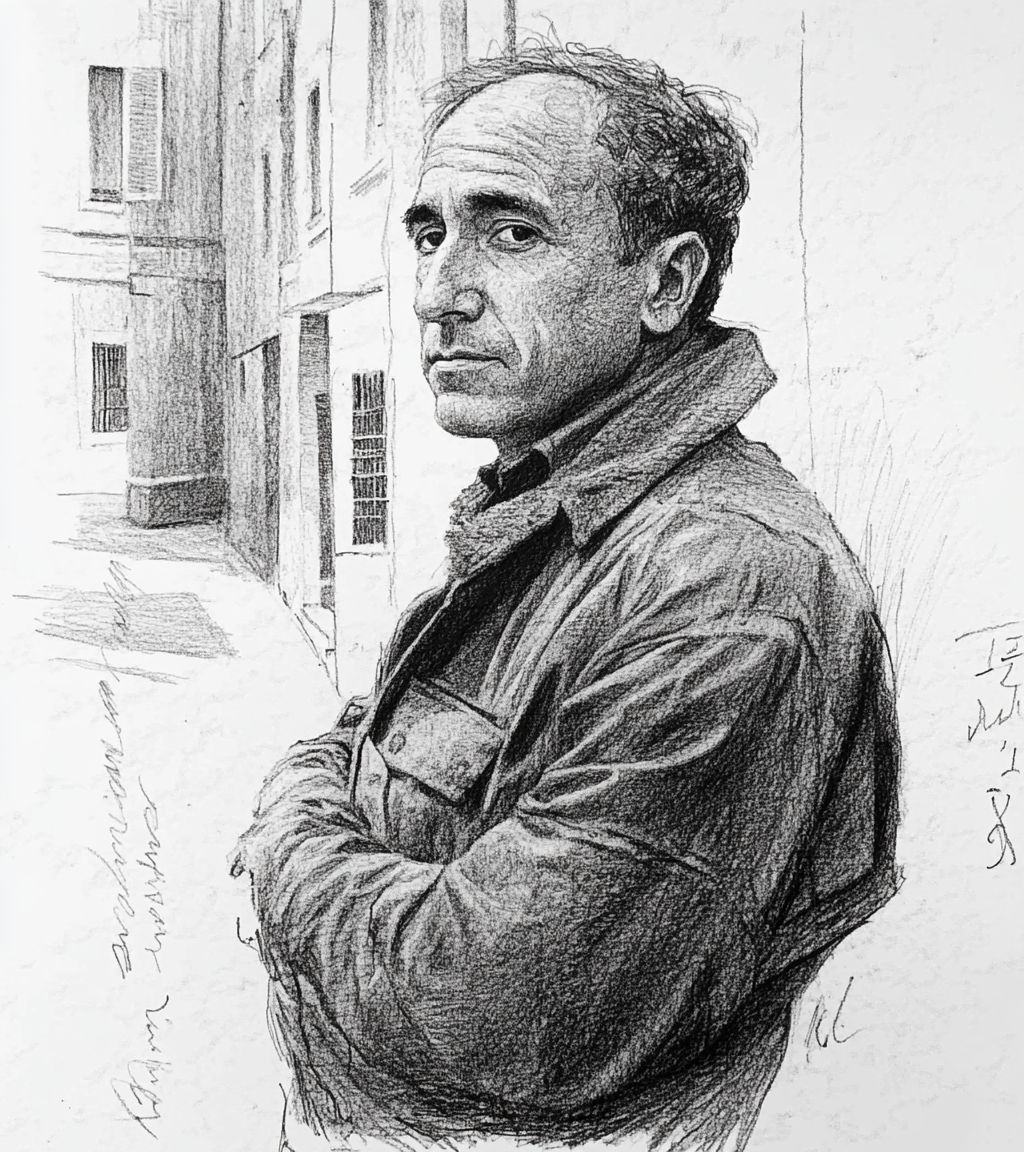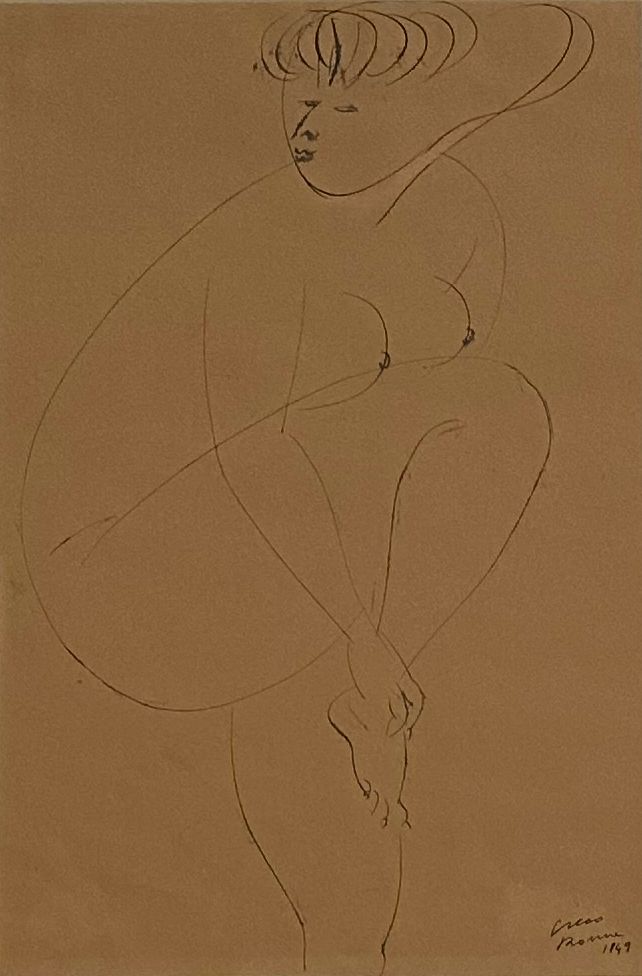
Emilio Greco
At the age of 13, Emilio Greco began an apprenticeship in a local stonemason’s workshop, where he developed a strong foundation in craftsmanship and form. After studying at the Academy of Fine Arts in Palermo, he moved to Rome. Greco held his first solo exhibition in 1946 and began teaching sculpture in Rome by 1948. He became an important figure in postwar Italian art.
Greco is known for his refined figurative sculptures, often focusing on female nudes, portraits, and mythological subjects. His works are characterized by elegant, elongated proportions and a smooth, lyrical style that blends classical influences from Greek, Roman, and Etruscan art with a distinctly modern sensibility. Alongside his sculptural work, he produced expressive drawings and graphic series — such as Commiati — that explored emotional and poetic themes with sensitivity and subtlety.
Among his most iconic works are the Monument to Pinocchio (1953) in Collodi, the bronze doors for Orvieto Cathedral (1962–1964), and Large Bather (1956). His sculpture Nereid (1973), located in London's Mayfair, is another notable public work. Greco exhibited internationally, including solo shows at Palazzo Barberini (Rome, 1958), Stadtische Galerie (Munich, 1959), and Musée Rodin (Paris, 1961). His legacy is preserved through permanent museum collections.
Collected by major institutions and notable private collectors:
— The Museum of Modern Art— Tate
— Museo Emilio Greco Orvieto
Notable sales and auction records:
— Grande Bagnante II, USD 260 thousand at Christie's, New York, 2008— Bagnante, USD 81,2 thousand at Sotheby's, New York, 2000
— Grande figura seduta, USD 74 thousand at Christie's, New York, 1999
Artworks and Paintings
Biography and Artistic Career Highlights
Emilio Greco was born on October 11, 1913, in Catania, Sicily, into a modest family background. His childhood unfolded in the atmosphere of traditional southern Italian culture, where he early on showed a talent for drawing and modeling. As a teenager, he trained in art workshops and developed an interest in ancient art, which later had a strong influence on his work.
1934 — took part in a competition for reliefs in Rome; his first steps on the national stage.
1946 — returned to artistic activity, with his first exhibitions in Rome and participation in group shows.
1947 — held a solo exhibition in Rome, which brought him recognition as a master of modern sculpture.
1948 — participated in the Venice Biennale, where his sculptures attracted the attention of critics and collectors.
1950s — developed his mature style, combining ancient traditions with contemporary exploration. Created large sculptural compositions dedicated to the female body, which became the central theme of his work.
1956 — awarded first prize at the sculpture competition in Kassel.
1960–1962 — created the monument to Pope John XXIII for the Cathedral of San Pietro in Vittorio Veneto.
1960s — worked on monumental projects for the Vatican, including the bronze doors for the cathedral in Orvieto.
1967 — began teaching at the Academies of Fine Arts in Rome and Carrara, training a new generation of sculptors.
1970s — continued to work on the theme of the female body, created portraits of notable contemporaries, and participated in exhibitions across Europe.
1974 — retrospective at the Tate Gallery in London, confirming his international recognition.
1980s — worked on new series of sculptures, drawings, and lithographs, and took part in exhibitions in Japan, the United States, and Latin America.
On April 5, 1995, Emilio Greco died in Rome. He left behind a rich legacy of sculptures, drawings, and engravings. His art, uniting classical harmony and modern sensuality, became an important part of European art of the 20th century.

